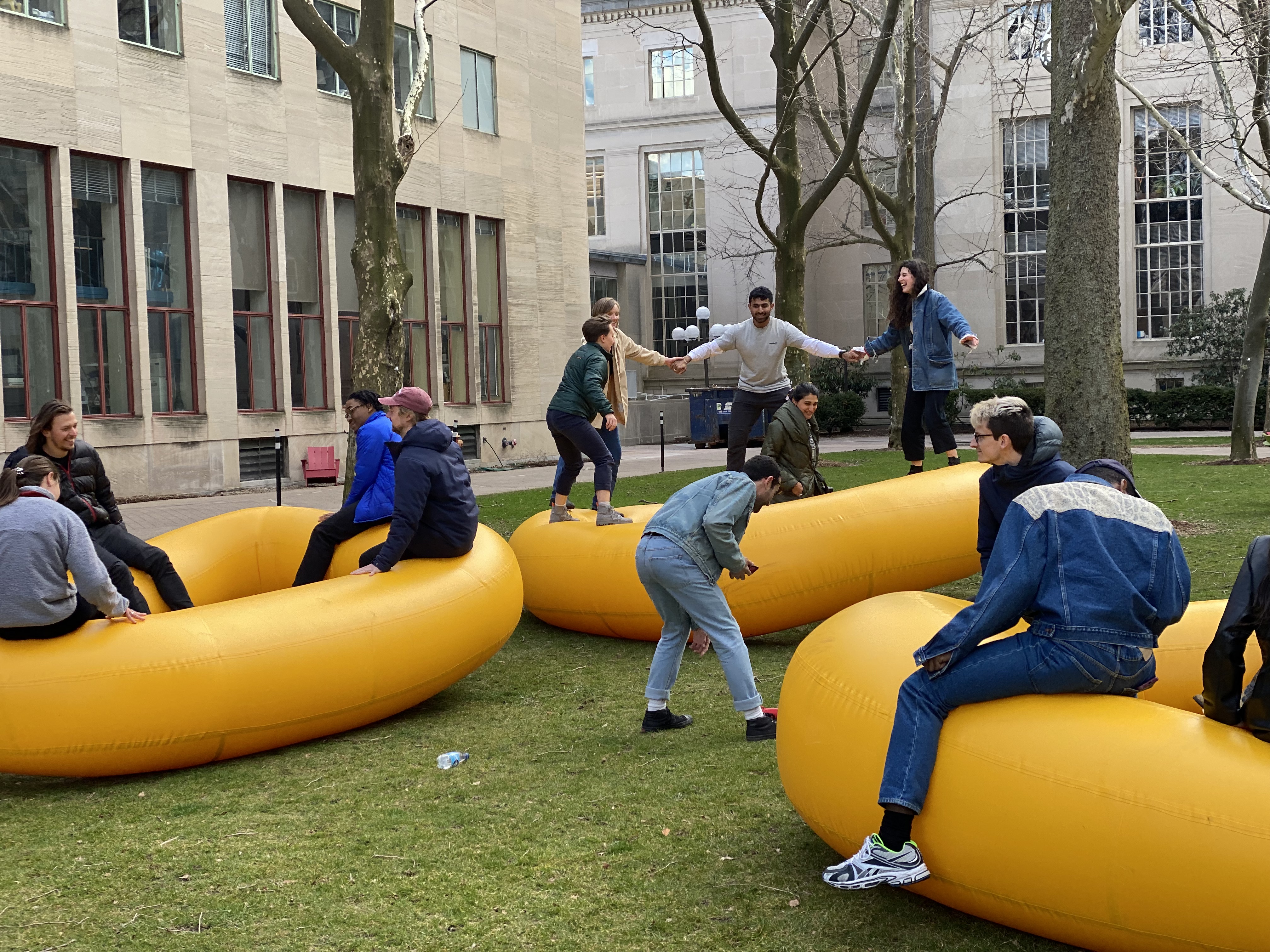
Behind the Podium: A few questions with guest speaker Ana Miljački
Feb 13, 2023
Ana Miljački is a critic, curator, and Professor of Architecture at Massachusetts Institute of Technology, where she teaches history, theory, and design and serves as Chair of Architecture and Urbanism. Her research interests range from the role of architecture and architects in the Cold War-era Eastern Europe, through the theories of postmodernism in late socialism to politics of contemporary architectural production.
Miljački presents a lecture as part of AUD’s Public Event Series on Monday, February 27. Ahead of that, she spoke with AUD about her journey thus far and some thoughts on the future.
First, welcome back to Los Angeles. February is a good month to take a BOS-LAX trip. What inspires you about LA and its architecture? [Editor’s note: Miljački is currently based in the Boston area, and the interviewer was Boston-based until recently]
I don’t know LA very well–only two or three neighborhoods, a handful of buildings–but my impression from afar has been that it is possible to offer architecture to LA, and LA will take it. I often wonder whether our students in the United States are exposed to architecture that offers something beyond its most basic programmatic problem-solving and profit-making. I don’t have a sense of how things really add up in LA, but I imagine that one can go about their life and encounter architectural agency regularly–buildings whose tectonic and formal attributes ennoble daily life. I am sure it takes a lot more work than that, but that relaxed, sunny disposition that I feel I am receiving from LA is both inspiring and a bit hard to take–we have to acclimate to it a bit, especially when traveling the BOS>reLAX circuit.
Rewinding a bit: in tracing your journey, I keep coming back to your undergraduate experience at Bennington, long renowned as a hotbed of provocative, elastic, boundary-defiant work and thought. In retrospect, how would you describe Bennington’s impact on your future self?
Ah, this kind of question does not come along very often. Bennington was super important for me. First, it was my gateway out of war-torn Yugoslavia and into the US context. I arrived from an architectural high school, thinking I knew what architecture was, and what it was for me–I was both cocky and boxed-in. I knew little about Bennington's reputation before I got there, but they had enabled me to study there, taken a risk on me–so it only seemed fair I should take one on the school.
The experience turned out to be my most important positive pedagogical lesson. At Bennington, undergraduate students were treated as younger colleagues, with opinions, experiences, and struggles that mattered and were worthy of being articulated out loud. Conversations about work were intense, intimate, and fortifying, and the standards of production as high as any one of us was willing and able to conceive. I embraced Bennington’s offer to think across different disciplines, to connect literature to philosophy to set design to spacetime physics, and to think of it all as architecture. I was able to cultivate and feed my appetite for intellectual elasticity and curiosity, but also to cultivate my appreciation of precision and to develop, on my own terms, my dedication to iteration and execution.
You and your work have intensively, and extensively, surveyed intersections and overlaps between architecture and political environments, and the politics of contemporary architectural production. How can a fraught political environment, especially at a global scale, affect architecture’s present and near future?
Politics on the global scale have never been not fraught, and architecture has always been entangled in it all. That would be worth discussing, though complicated in this format. Here is instead a hope I have, both as a historian and someone invested in supporting young generations of architects to produce the next generation of architecture: I am hoping that we can collectively and globally rewrite the old “center-periphery” discursive and epistemic vectors. I imagine that various types of architectural artifacts, including buildings, as well as various types of old and new tools will be necessary in our rewiring of the economic, labor, aesthetic, and political forces that they, in part, also materialize.
How has the rise of social media in the last decade or so affected architectural production?
On one hand, that kind of center-periphery rewriting might now be feasible as a result of the mediatic landscape we all occupy with relatively little hardware required. On the other hand, I think the most consequential result of the way architectural images (and commentary) travel via social media, is that there is a sense that image-making is itself a form of intervention in the world. And in some very important ways, it is, but I hope it does not replace all the other ways architecture “works.”

A few years ago, you launched the Critical Broadcasting Lab at MIT, in part to broadcast some critical curatorial work. What inspired you to initiate this project?
There were many factors, but I will note here the two most important reasons. One, I think we can and need to speak about and with architecture politically, and the Critical Broadcasting Lab was a reminder to do that with full awareness of the image-voice-attention economies we occupy. Two, I wanted to try to carve out a space within academia for operating at a different pace, for processing architectural questions with architectural tools but not necessarily, or not yet, for the sake of immediate design proposals. Different temporalities course through every architecture school, and the Critical Broadcasting Lab allows for thinking both about the very long durée and about immediate urgencies.
Is there anything you’d like to preview about your AUD lecture?
These answers are already a bit more of a preview than seems strategic for someone who really enjoys having interlocutors in the flesh.
Related topics |
Critical Studies, Media, Cross-Cultural Studies |